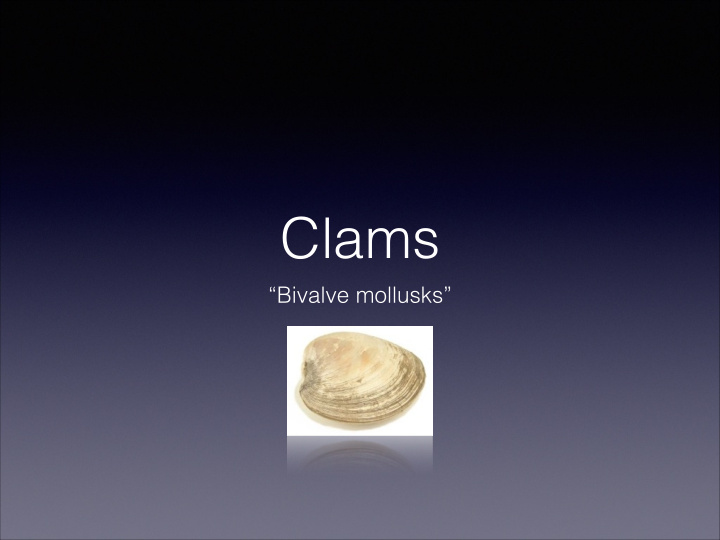



Clams “Bivalve mollusks”
Appearance • A clam’s shell consists two halves that are usually equal which are connected by a hinge joint and a ligament that can be internal or external. • Most clams have smooth outer shells.
Features • Clams have two adductor muscles contract to close the shells. • No head or mouth (besides scallops) • Have kidneys, a heart, a mouth, and an anus • Have a natural glue that causes it to connect to other shells or things at the bottom of the river/sea • Clams are bilateral
Clam parts
Facts • There are approximately 2000 different species of clams • 20% of them are not edible • Oysters make Pearls, not clams. They are not the same, but very similar
Reproduction • Clams may be male, female, or both • Females produce up to 60 million eggs in a season. They release the eggs into open water and then the male releases sperm. The eggs are fertilized in open water
Growth • Once fertilized, the young clam goes through a larvae stage where it is carried by waves and currents. Eventually it develops a shell and sinks to the bottom where it feeds on plankton • Once the shell is developed, clams dont grow as much anymore
Evolution • Clams and cephalopods first appeared in the lower to middle Ordovician period • Clam-like Brachiopods existed before Earth’s largest mass extinction • After the clarity when little existed, a different kind of clam-like organism called a Bivalve, took over
Clams today • As you may know, clams are most useful in providing food for us • We also use the shells for multiple other reasons
Works Cited • www.Wikipedia.com • www.astrobio.net • Yahoo answers
Recommend
More recommend